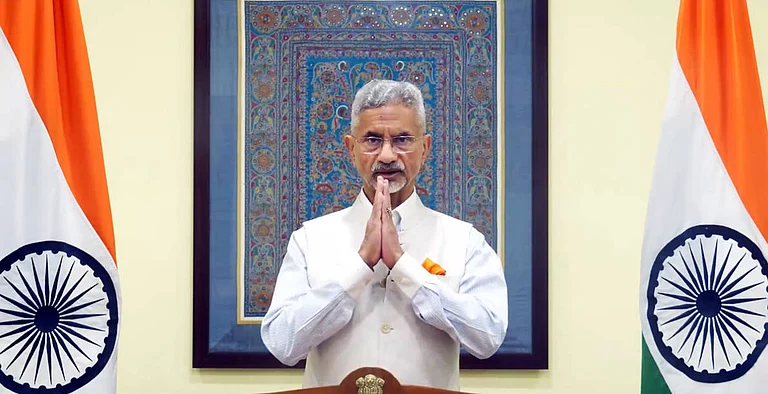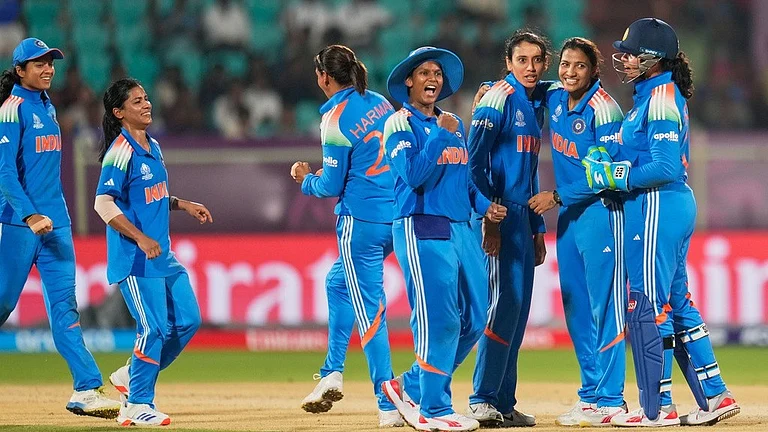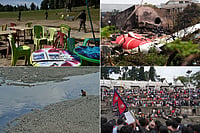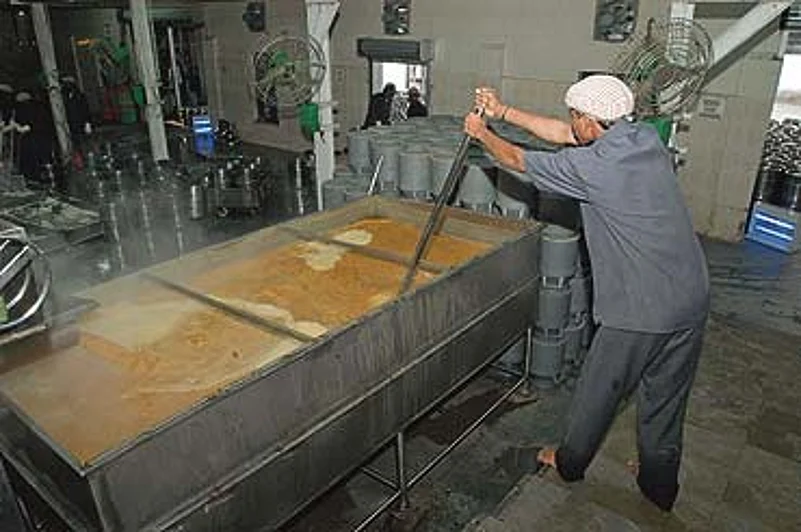
All masalas used in the Naandi kitchens are made in-house
Manoj Kumar recounts the small joys of being a provider of meals to young children—how their eyes light up, for instance, when they see a truck driving in with cardboard boxes full of biscuits. Each child gets four biscuits once a week. Pickles are a new addition in the menu, to cater to the need of south Indian children for something spicy to pep up the meal. All masalas and pickles are produced in-house. This leads to good quality, but also a higher nutrition value—peanuts and jaggery are added to masalas to raise their protein and iron content. Naandi is also working with the Geneva-based Global Alliance for Improved Nutrition to develop a nutrition supplement of iron, zinc and folic acid that can be added to curries or dal without ruining the taste for children.
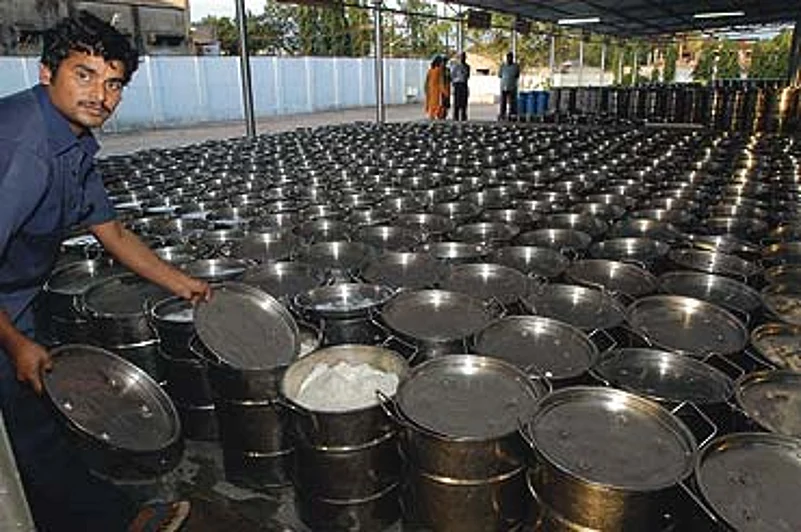
Most operations at the unit in Uppal, Hyderabad, are hands-free
By 8.30 am, the food is cooked and ready to be transported to various schools. Packed and sealed in plastic and steel containers, it is opened only when the lunch bell rings, to prevent contamination. Naandi employs 250 staffers and 52 trucks for its mid-day meal operations. Meals are generally served between 11 am and 1 pm because some schools have three shifts. Currently, the scheme is capped at class V, but the state is planning to provide free lunches to older children too.
It is amazing to see what one wholesome meal a day can do to a child's life. Enrolment in state-run schools in the twin cities has gone up by 25 to 30 per cent since the mid-day meal scheme began, says Lina Joseph, programme head of the Naandi mid-day meal scheme. A large number of the newly enrolled are girls. There is 10 to 20 per cent improvement in children's health and malnutrition levels, too, have fallen similarly. Hearteningly, attendance rates in the schools, where absenteeism has been rampant, have gone up by 10 to 20 per cent. Teachers say children concentrate better in class once they have eaten.
The centralised Naandi model has a lot going for it. Its costs are lower than that of the self-help groups (SHGs) normally employed in rural areas to serve mid-day meals at schools, since its operations are on a large scale. Besides, these groups cook at schools. That doesn't work for urban schools, which function in congested structures. Fire hazards are also a looming danger, as was recently found in Tamil Nadu. Government agencies also find it easier to monitor a centralised kitchen instead of trooping from school to school to supervise the work of SHGs and anganwadis.
For all these reasons, the Naandi model has found favour with the Madhya Pradesh and Rajasthan governments as well. Naandi works in Udaipur, Bhilwara, Chittorgarh, Ajmer, and Jhalawar in Rajasthan. In MP, it provides mid-day meals in Bhopal, Jabalpur and Indore. In AP, it has another unit in Vizag which caters to about 40,600 children. Its hot lunches find their way to 4,000 schools everyday—food for the body, mind and soul.







